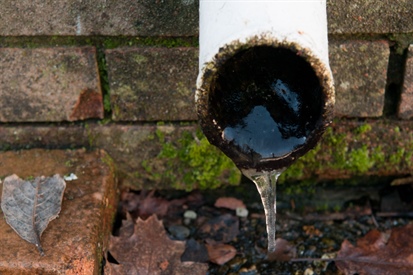Prevent Frozen Pipes This Winter With Expert Tips From Pros

As winter temperatures drop, one of the most common problems homeowners face is frozen pipes. When water inside your pipes freezes, it expands, creating immense pressure that can lead to cracks or bursts.
Dealing with burst pipes can be costly and disruptive, especially during freezing weather. Fortunately, you can prevent frozen pipes this winter with advice from plumbing professionals, saving yourself time and hassle.
In this guide, we’ll cover key topics to protect your pipes this winter. By understanding the risks and following our practical tips, you can keep your home’s plumbing safe throughout the harshest winter months.
What Temperature Causes Pipes to Freeze?
Pipes begin to freeze when the temperature falls to 32 degrees Fahrenheit (0 degrees Celsius) or lower. However, pipes are more likely to freeze in prolonged subfreezing conditions, typically around 20 degrees Fahrenheit (-6 degrees Celsius). At these temperatures, uninsulated pipes in poorly heated areas like basements, attics, and crawl spaces are at the greatest risk.
As water in the pipes freezes, it expands, increasing pressure within the pipe system. Even small amounts of ice buildup can block water flow and stress the pipe walls. If this pressure becomes too high, it can cause the pipe to burst, leading to significant water damage once the ice thaws.
Homeowners in regions with consistent cold snaps should take preventive measures to avoid frozen pipes during winter. Monitoring weather forecasts and taking action when temperatures dip below freezing is critical.
How Can I Insulate My Pipes for Winter?
Proper insulation is one of the most effective ways to protect pipes from freezing during winter. Start by identifying pipes most vulnerable to cold, such as those in attics, garages, crawl spaces, and exterior walls. Insulating these pipes helps maintain a stable temperature and reduces the risk of freezing.
Common insulation materials include foam pipe sleeves, fiberglass wraps, and heat tape. Foam pipe insulation is cost-effective and easy to install, while heat tape provides extra protection by actively warming the pipes. Be sure to secure the insulation properly to cover all exposed areas of the pipe. Additionally, keeping your home adequately heated ensures pipes remain above freezing temperatures.
What Should I Do If My Pipes Are Frozen?
If you think your pipes are frozen, you need to act fast to prevent further damage. The first step is to shut off the main water supply. This will stop water flow and reduce pressure within the pipes, lowering the chance of a burst pipe. Frozen pipes often show clear signs, such as little or no water coming from faucets, visible frost on exposed pipes, or unusual sounds like gurgling. These indicators mean ice has likely formed, blocking water flow.
After shutting off the water supply, you can start thawing the frozen pipe. Use safe and gradual methods to warm the affected area, such as applying a hair dryer or heat lamp or wrapping the pipe with towels soaked in hot water. Always begin thawing near the faucet and move toward the frozen section. This allows any melted water to escape through the open tap and reduces pressure buildup. Avoid using high-heat tools like blowtorches, as they can damage the pipe or even cause a fire. Patience is key during this process—thawing too quickly can weaken the pipe and lead to cracks.
If you can’t locate the frozen section or safely thaw the pipe, it’s time to call a licensed plumber. Frozen pipes can escalate into significant issues, and professionals have the tools and expertise to address the problem quickly and effectively. Acting promptly when you suspect frozen pipes is essential to prevent costly water damage and restore your plumbing system to normal.
How Can I Avoid Burst Pipes in Cold Weather?
Avoiding burst pipes requires a combination of preparation and vigilance during cold weather. Start by insulating all vulnerable pipes and sealing cracks or gaps in walls, windows, and doors to keep cold air out. Maintaining a consistent indoor temperature, even when you’re away, also helps protect your plumbing.
Letting faucets drip slightly during extreme cold can relieve pressure within the pipes, reducing the risk of bursting. Pay special attention to outdoor faucets and hoses, which should be disconnected, drained, and covered for winter.
For added protection, schedule a professional plumbing inspection to identify weak points in your system. Routine maintenance ensures your pipes are in good condition before freezing temperatures arrive.
Are All Types of Pipes Susceptible to Freezing?
While all pipes can freeze under extreme conditions, certain materials are more vulnerable. For example, metal pipes like copper and galvanized steel conduct cold more efficiently than plastic pipes, making them more likely to freeze. However, plastic pipes (such as PEX or PVC) are not immune to freezing and can still crack under pressure.
Pipes located in unheated or poorly insulated areas, regardless of material, are at the greatest risk. Older homes with outdated plumbing may also have more exposure points where freezing can occur. To minimize the risk, ensure all pipes—metal or plastic—are properly insulated and protected during winter.
Protect Your Plumbing This Winter With Drain Pro Plumbing!
Protecting your pipes from freezing is a critical step in maintaining a safe and functional home during winter. Working with an experienced plumber like Drain Pro Plumbing can help identify vulnerable areas and recommend solutions to keep your plumbing safe.
By understanding what causes pipes to freeze, properly insulating exposed plumbing, and knowing how to react if freezing occurs, you can avoid costly repairs and water damage. If you need expert advice or assistance, Drain Pro Plumbing is here to help! Contact us to keep your plumbing in top shape throughout the winter.